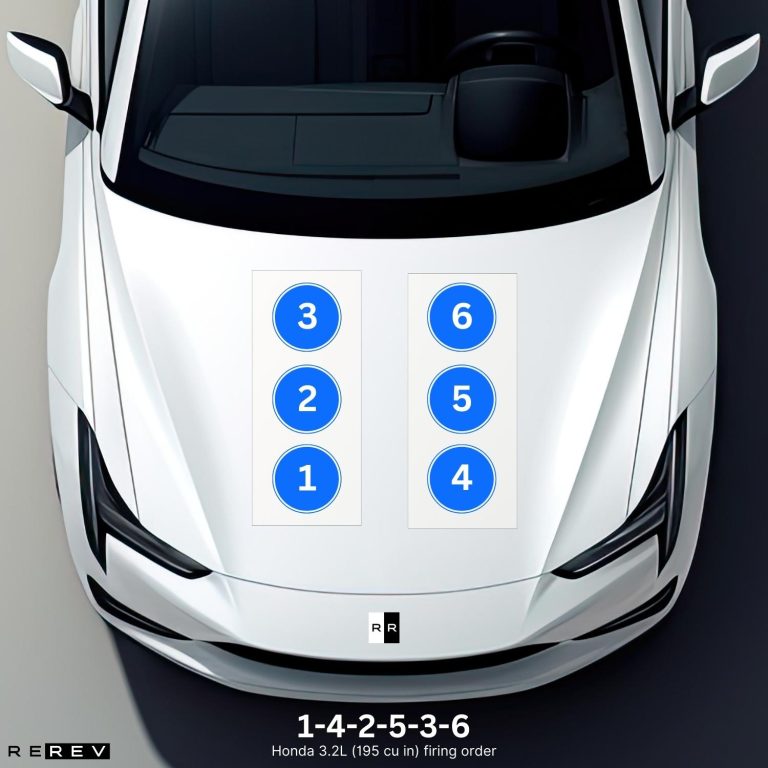Honda 3.2L (195 cu in) firing order — diagram & guide
The precision and design behind the Honda 3.2L firing order.

Ever since Honda added the new “J” series of six-cylinder engines, their lineup got more depth and there was the legendary 3.2-liter VTEC from the first-gen NSX available before. So, even though this proved to be a good and reliable engine, drivers were somewhat confused by all these versions.
If you own one of the vehicles with this V6 under the hood, our team will give you a tour of the Honda 3.2L (195 cu in) firing order. We’ll try to help you figure it out when it comes to maintenance of this engine and using its firing sequence to check the cylinders in order.
Honda 3.2L V6 firing order
As for the “regular” 3.2-liter V6, it wasn’t that different from the previous 3.0-liter engine that Honda produced at that time. We have to say first that the Honda 3.2L V6 firing order is 1-4-2-5-3-6, so it’s the same as with its sibling engine.
However, the confusion starts when you add the legendary engine from the Honda NSX. It was the same cubic capacity as an engine, and it was also the V6, but this time it used the VTEC technology to push more brake horsepower to the wheels.
Honda 3.2L VTEC firing order
When it comes to the 3.2-liter VTEC engine, it was actually the first V6 with this capacity made by Honda. So, drivers are often wondering if there are any differences between this one and the regular V6. To put it simply, both engines use the same engine block, so the Honda 3.2L VTEC firing order is 1-4-2-5-3-6.
It’s the exact same firing pattern and it’s no wonder since these two engines used a lot of common parts, only the engine from the NSX is made lighter and more potent.
Honda 3.2L cylinder diagram

The cylinder arrangement of the 3.2-liter Honda engine is pretty standard for that time and other Honda’s V6s. It comes with two cylinder banks, and looking from the front end towards the rear of the engine, you’ll find the cylinders 1, 2, and 3 on the left side, and cylinders 4, 5, and 6 on the right side.
The simple arrangement makes it much easier for drivers to work on their engine and this way you can apply the firing order properly to look for a misfiring cylinder.
Honda 3.2L vehicle applications
To make sure you’ll use the appropriate firing order for this Honda engine, we’ll list all the vehicles that have used it over the years:
- Honda Inspire
- Acura TL
- Acura CL Type S
Along with these, the Honda NSX used the VTEC version of the 3.2-liter engine, but at least these two share a lot of common components and the firing order which makes things easier.
Our take
So, now you know a bit more about the firing order of one of Honda’s most legendary engines. We hope that we’ve also cleared things up when it comes to the comparison of the regular V6 and the VTEC from the NSX, so now you can use the pieces of information laid out here to keep your engine properly maintained.